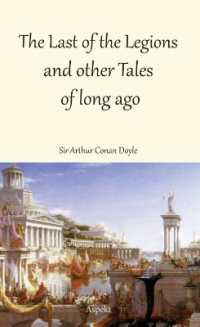- ホーム
- > 洋書
- > 英文書
- > Religion / Ethics
Full Description
Partly in a desire to defend divine freedom and partly because it is seen as the only way of preserving a distinctive voice for theology, much contemporary theology has artificially restricted revelation and religious experience, effectively cutting off those who find God beyond the walls of the Church. Against this tendency, David Brown argues for divine generosity and a broader vision of reality that sees God deploying symbols (literary, visual and sacramental) as a means of mediating between the divine world and our own material existence. A sustained argument for divine interaction and more specifically the ways in which God speaks in the wider imaginative world, this volume calls for a careful listening exercise since symbols are richer and more open in their possibilities than their users often suppose. Not only is this true of the imagery of Scripture, even inanimate objects like buildings or hostile but creative artists can have important things to say to the believing Christian. An ideal introduction that also moves the conversation forward, this volume addresses foundations, the multivalent power of symbols, artists as theologians and meaning in religious architecture.
Contents
Editor's Introduction Christopher R. Brewer
Part I
Foundations
Introduction
In the Beginning Was the Image
Why Theology Needs the Arts
Learning from Pagans
Part II
The Power of Symbols
Introduction
Understanding Symbol
Baptism and Water as Cosmological Symbol
'The darkness and the light are both alike to thee': Finding God in Limited Light and Darkness
Part III
Artists as Theologians
Introduction
The Annunciation as True Fiction
Why the Ascension Matters
Artists on the Trinity
Part IV
Meaning in Religious Architecture
Introduction
Architecture and Theism
Interfaith Dialogue through Architecture
Tensions Between Politics and Religious Symbolism in Architecture
Worshipping with Art and Architecture








